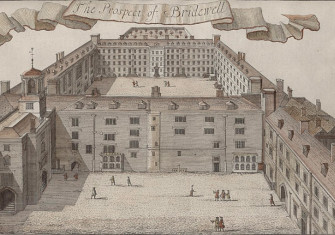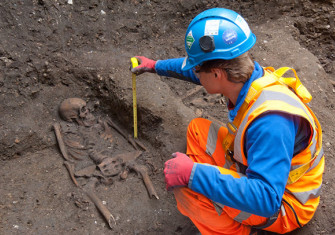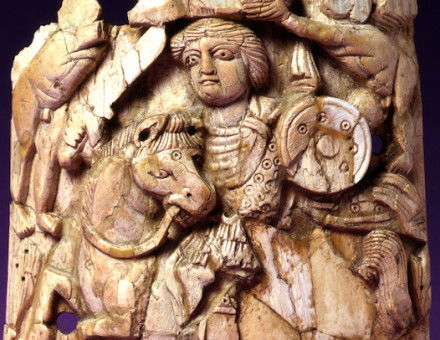Archaeology: Remembering the Ordinary People
As archaeologists at London's Crossrail site begin the colossal task of excavating 3,000 skeletons, we should pause to consider the hearts, minds and lives of the ‘normal’ people who once inhabited the bones.
 This week archaeologists in London began the task of excavating some 3,000 bodies at the site of New Churchyard, near Liverpool Street station.
This week archaeologists in London began the task of excavating some 3,000 bodies at the site of New Churchyard, near Liverpool Street station.
Though it is tempting to evoke names such as John Lilburne and Robert Lockyer and to play on the association with the infamous ‘Bedlam Hospital’, the burial ground of New Churchyard was actually the final resting place of countless 'ordinary' people, especially during times of disease. Established in 1569, the New Churchyard was located next to Bethlam hospital (hence the name ‘Bedlam Burial Ground’), but it was not part of it. While a few hospital inmates may have been buried at the site, it was primarily ground for the poor and parish ‘overspill’ in times of increased mortality. The names of those interred at the site provide a keyhole through which to view a rotten period of London's history: the Great Plague.
On April 9th 1665, a heavily pregnant woman buried her husband at the church of St Olave, within London’s city walls. The woman was called Elizabeth Lingar and, even by 17th-century standards, the sad occasion marked the beginning of a difficult year for her. Also in church that day, though perhaps not at the funeral, was the diarist Samuel Pepys. St Olave was his local church and he was in attendance with his wife, who was wearing a new 'light-coloured silk gown'. It was a small church, in a busy community. Pepys would often recognise friends in the congregation and it is likely the Lingars – who had lived in the parish since at least 1662 – did the same.
Hearth tax records suggest that Elizabeth and her husband lived in Brown's Court, a ‘small’ court off the ‘long and mean’ Angel Alley. Their residence had four hearths while their neighbours mostly had two. They had a three year old son called Robert and a daughter called Mary. Two weeks after her husband’s death, a second daughter, Elizabeth, was born. She was baptised at the same church on April 23rd 1665; a day marked by sporadic rain showers.
The mild weather was not to last and the summer heat brought the deadly disease of plague to the city of London, wiping out an estimated 100,000 people. Elizabeth’s daughter Mary died from the disease on July 30th, followed by the new baby on August 13th. Their deaths were recorded on the page opposite to their father’s, but unlike him they were denied a funeral. Their bodies were carted up and sent to the New Churchyard.
Also in the parish of St Olave in 1665, William Greenop suffered a devastating summer. Records show that on February 13th, he finally married Elizabeth, the mother of his young children. Yet as the plague epidemic escalated, his life was torn apart. His youngest child Elizabeth died of the disease in the middle of August and was buried with many others in the New Churchyard on the 19th of the month. She was followed by her six-year-old sister Ann on September 1st; her eight-year-old brother William on September 2nd; their mother Elizabeth on September 3rd; and, her four-year-old sister Sarah on September 7th. Only William remained.
The crucible of plague in the parish of St Olave was the Drapers Alms-houses, near to the historic abbey of Crutched Friars. There, plague took the lives of Mary Ramsey (and likely her sister Elizabeth as well), a boy named Richard Navy, Mr Grimes, John Crooke, Ann Crooke, Derrich Vann Allum and a Mrs Wiggons. Their bodies were all taken to the New Churchyard.
When we ogle at the carefully shot press pictures of skeletons from the site we should remember these people. They weren’t mad. They weren’t dissidents. They were people like us.
Rebecca Rideal is a television producer and research student at University College London.






